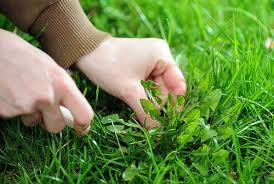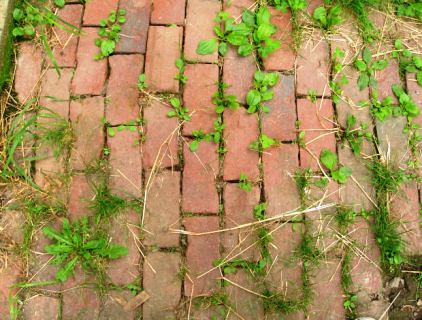Garden Weeding Top Tips
It’s the job we dislike the most, yet it’s the biggest task on our “To Do List”. Weeding. It often feels that no matter how much we pick, pull, spray and dig these troublesome tubers and pesky plants they still push their little green heads through, looking weak and defenseless, they then take hold of our borders or lawns like a tsunami of garden intruders. Then before we know it, a sea of WEEDS drowns us.
Frustrated by this tiresome job? Need some inspiration? Here is our advice on how to manage weeds in and around your garden, be it in veg patches, lawns, borders, ponds and even growing up our sheds and homes:
Weeds in your Lawn

Common lawn weeds are things like clover, moss, docks, daisy, and dandelion.
In small quantities these pesky plants can just be dug out by hand. For this you will need one spade or fork, some brute force and a gin and tonic.
Try to catch perennial weeds when young and when the ground is moist. If any holes are made whilst doing this, simply cover with fresh turf or add soil and seed.
I have fond memories of my Grandmother on weed watch with an old bone handled butter knife just whipping the odd weed from her lawn.
Feeding your lawn can also assist in weed combat; not feeding your lawn can result in thin or balding patches of grass which will soon loose out to weeds. So make sure you balance out spring and autumn feeding with the correct amount of fertilizer as per the label. Use a fertilizer with a high percentage of controlled release nitrogen, like porridge it releases a steady flow of nutrients.
Mowing higher and regularly can assist in weed prevention; mowing grass short weakens grass blades, keeping grass length longer will you’re your grass stronger. Regular mowing will discourage weeds from taking hold.
Seed your lawn; when you feed, why not seed. This will make a thick lush grass and help prevent weeds coming through.
If all else fails or you are happy to use chemicals then try using a spot herbicide treatment, which can be purchased from any garden centre and other shops like supermarkets. Take care when using and always read the label.
Weeds in Plant pots
Weeds growing in pots are irritating; often algae or moisture stealing weeds grow. Pulling out by hand or taking off the top layer of compost and replacing with some fresh however easily rectifies it.
To prevent these naughty weed’s you can mulch with decorative bark or gravel.
Weeds in gravel, driveways and paths
There is nothing more frustrating than a pretty path or driveway covered in weeds.

If your drive or pathway is prone to weed invasion then why not try mulching with bark or gravel, a great way to suppress weeds, don’t forget to lay a weed control fleece. It is now really cheap to purchase and adds extra protection from weeds.
If your paved or brick path has been invaded by weeds, simply hoe out the joints where the weeds are gathering with a trowel or screwdriver or alternatively spray weeds with a weed killer or try a homemade, organic remedy such as a mix of 2 liters of water, 2 liters of vinegar and a cup of salt, this recipe should kill the roots too.
Vegetable patches, borders and flowers beds
Weeds in-between our crunchy crops and beauteous borders can be a nightmare especially where seedlings and young plants are concerned but its nothing that a careful hand or hoe cannot cure. Pulling the weeds out by hand is better as this will get rid of the roots but does take more time.
In shrub borders why not try the previously mentioned weed control fleece, you could also think about adding a decorative mulch too! Prevention is better than a cure and looks good too.
Climbing weeds
Things like ivy and bindweed can be found growing upwards on houses, sheds and hedgerows; if unwanted then ivy can be quite destructive to walls and plants. However it does offer a good hiding place for insects and other wildlife.
Most climbing weeds can be pulled off by hand. Roots and shoots can be easily pulled out. Cutting woody stalks off at ground level should stop growth, it’s best to then dig out to roots.